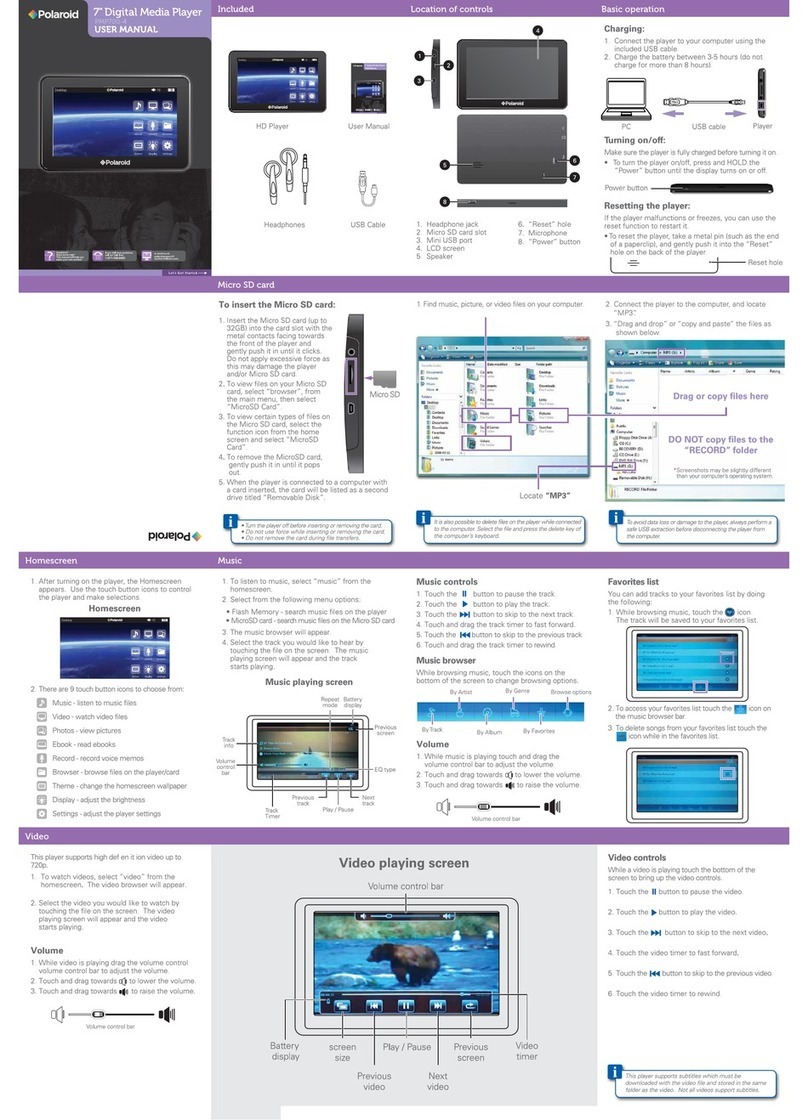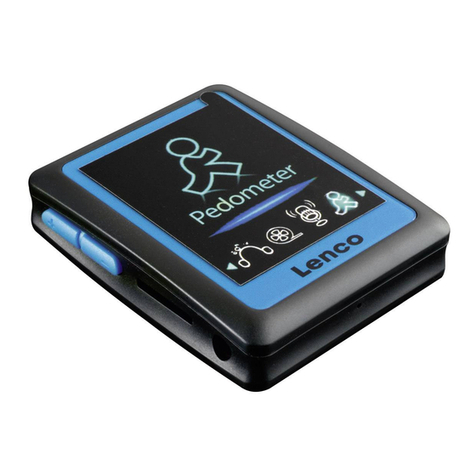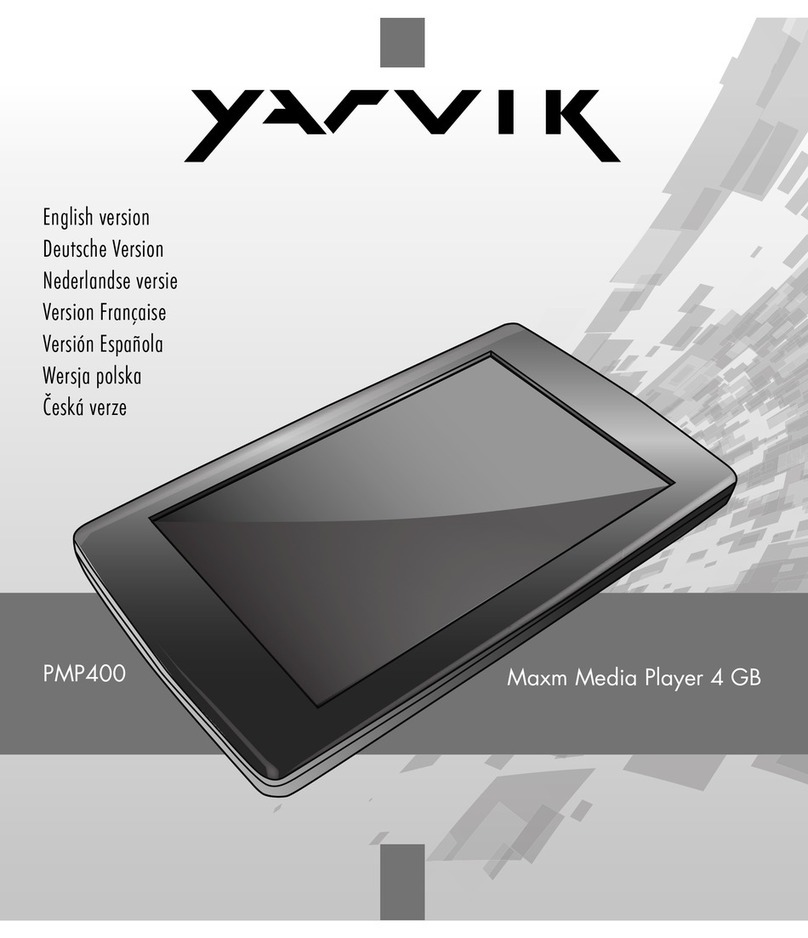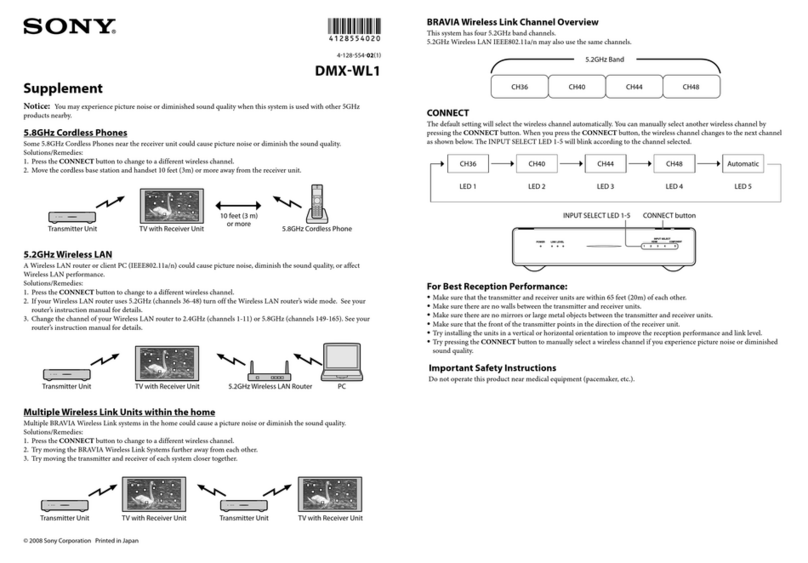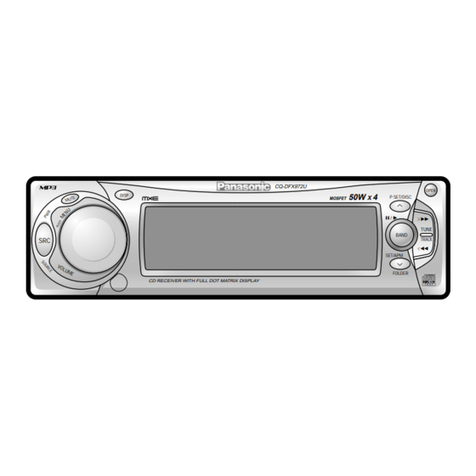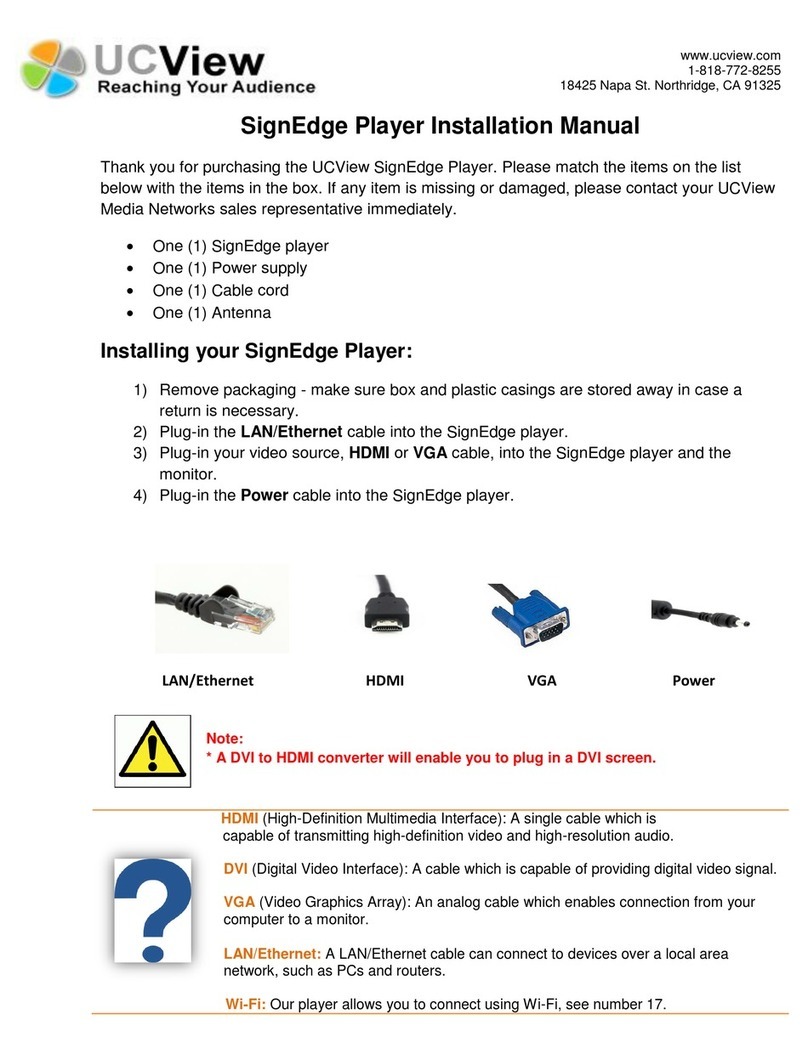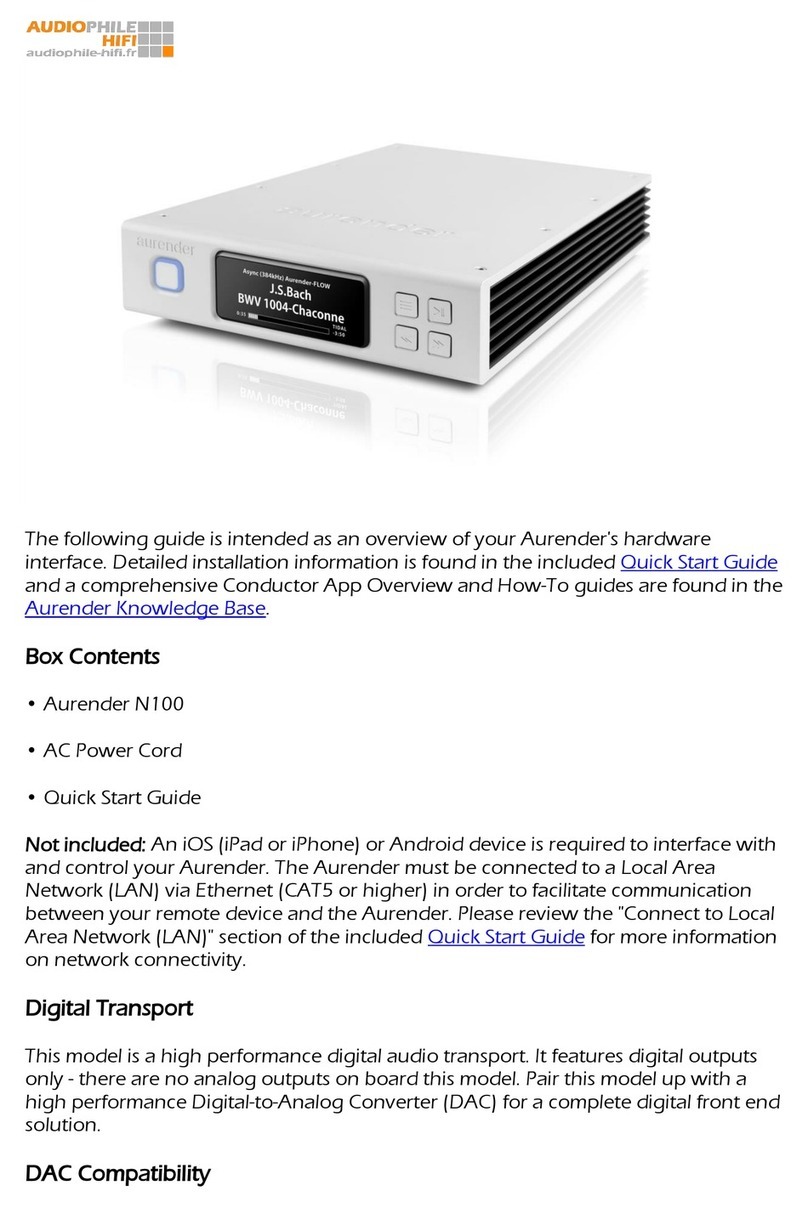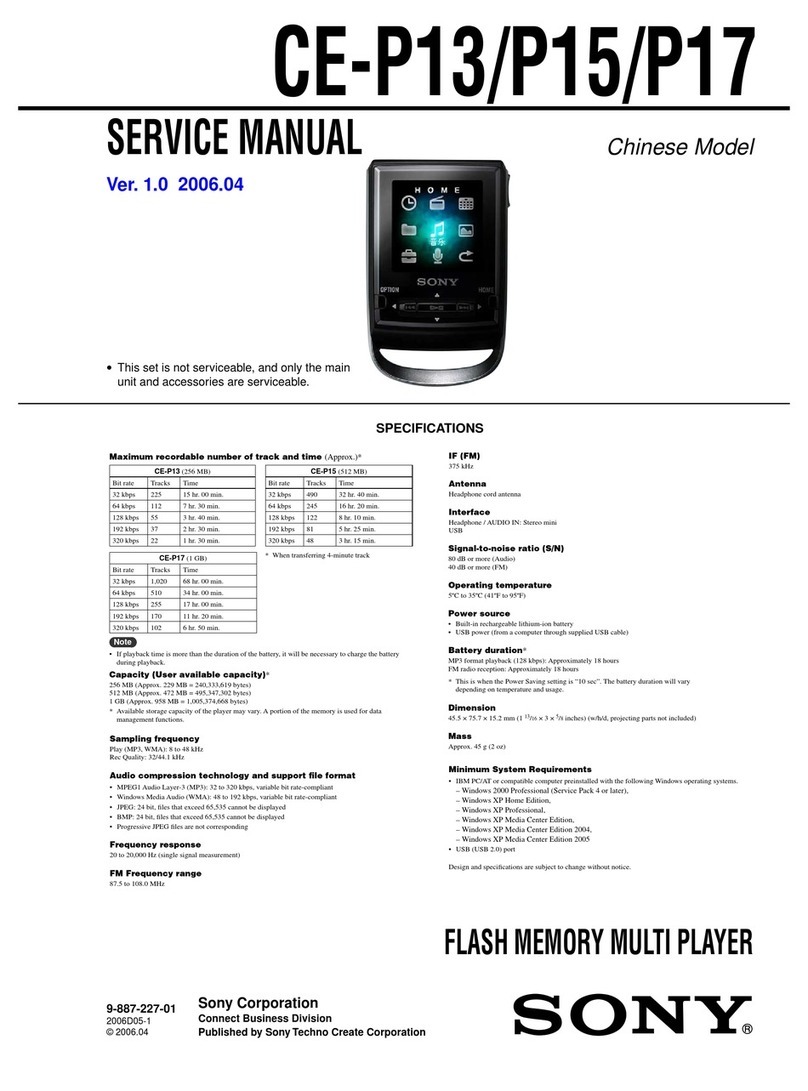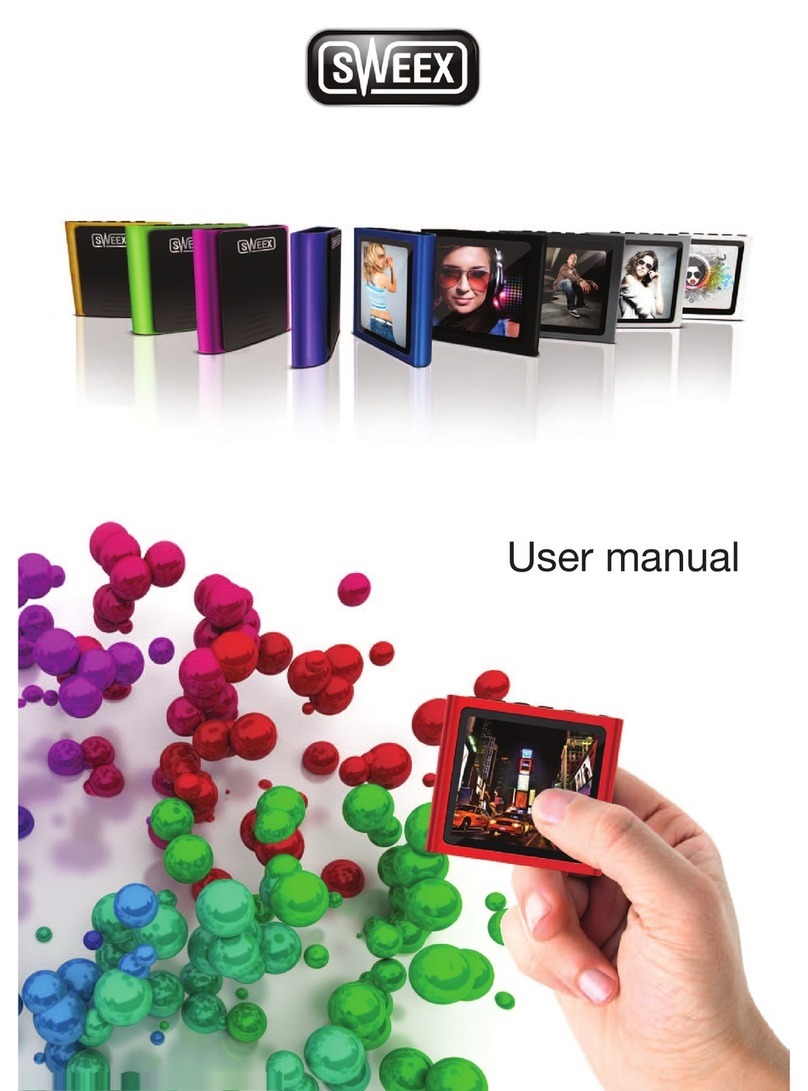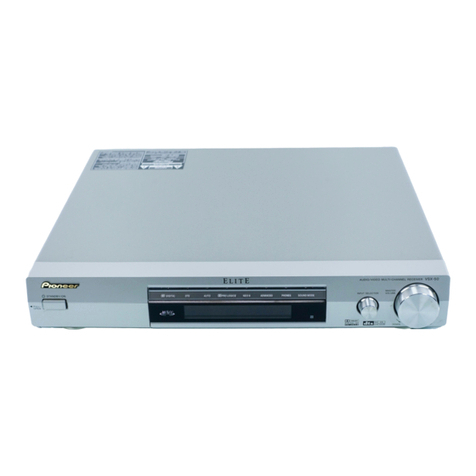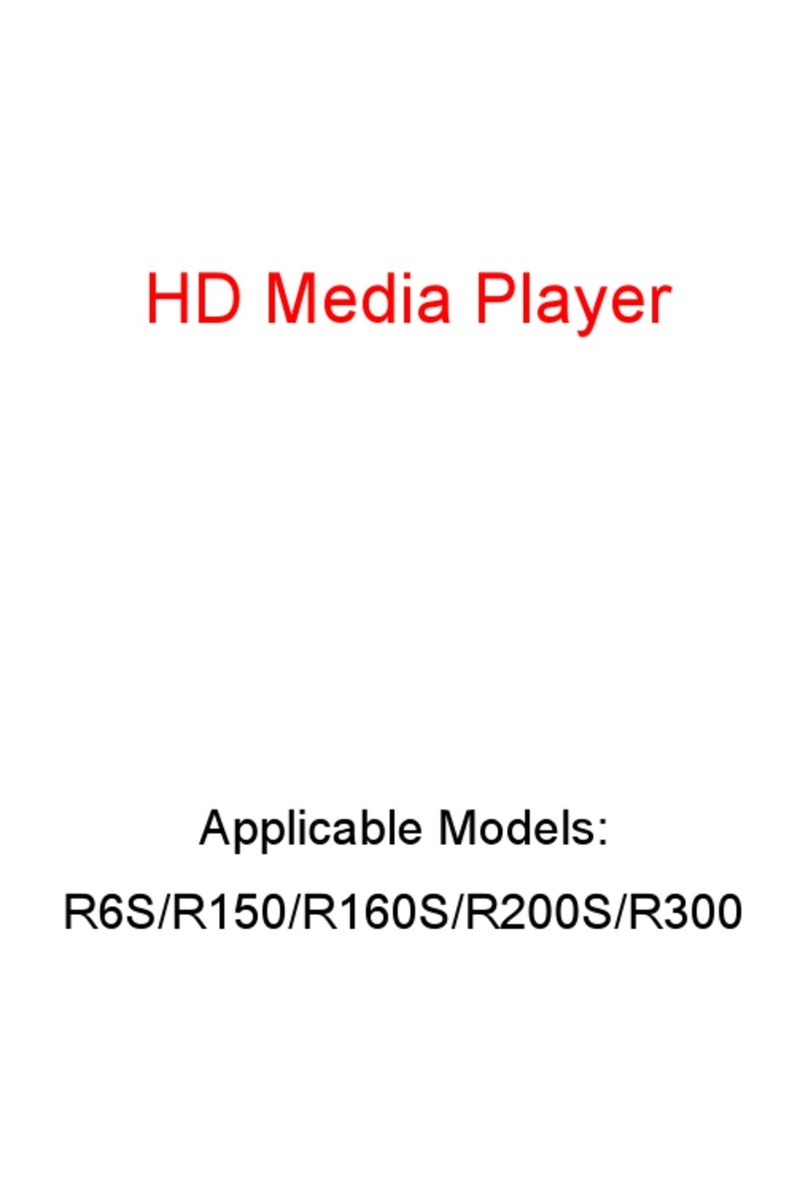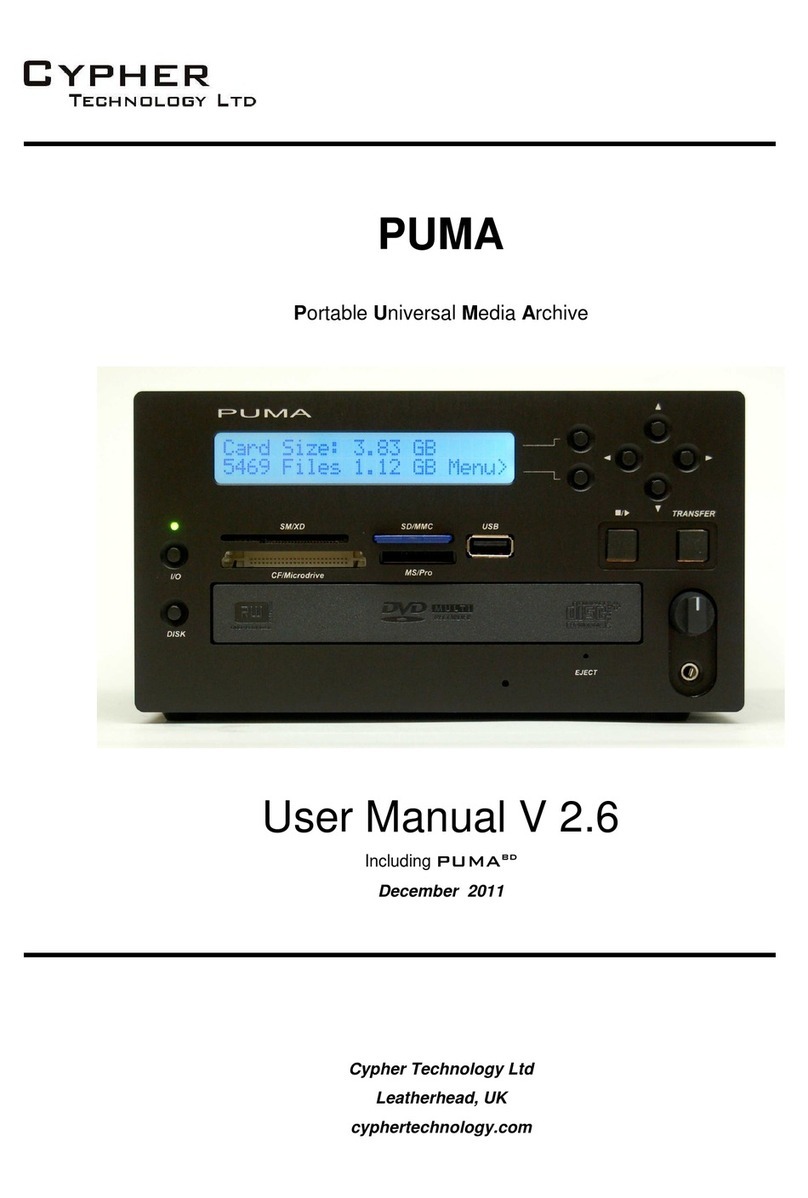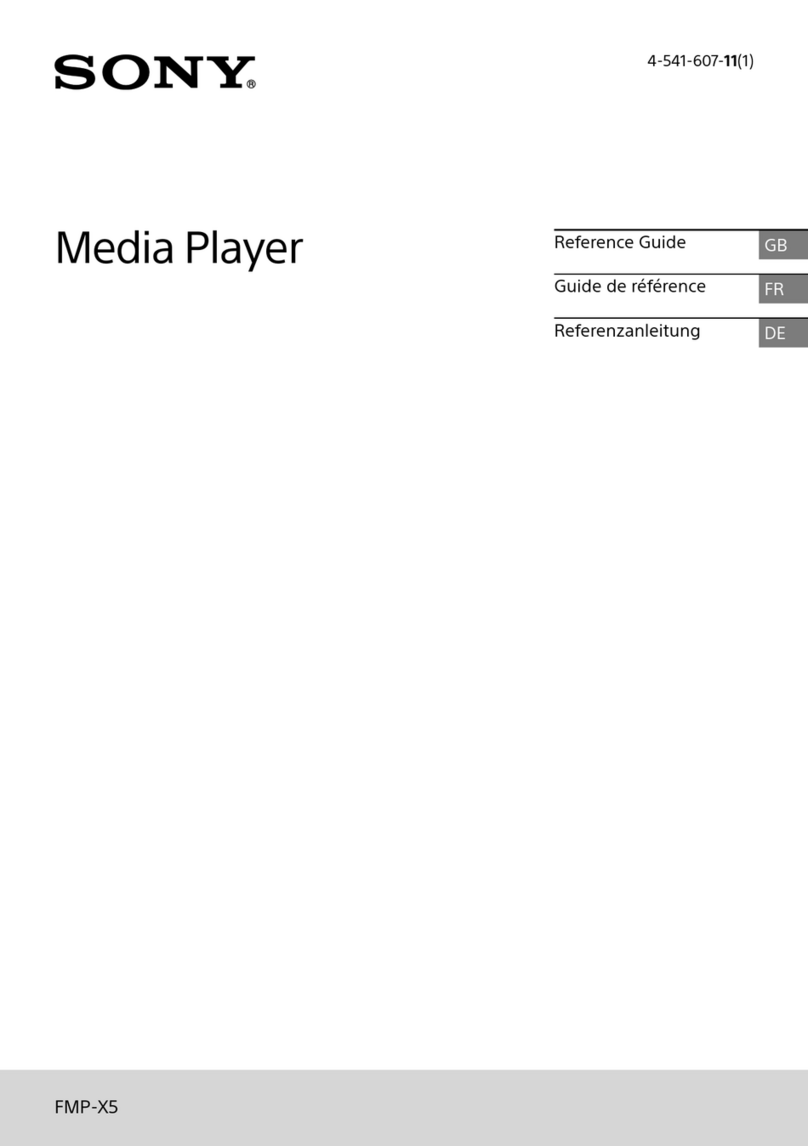Bones Milestone 212 Ace User manual

Milestone 212 Ace
Manual
www.bones.ch
FW 5
Grafikelemente
Grafikelement vom Bones Logo
Das Punkte-Bildelement vom Bones
Logo kann auch als grafisches Element
eingesetzt werden. Bilder und Grafiken
sollen aber nie gemischt werden. Die
Grafiken sollen nur in den definierten
Farben und eingesetzt werden.
fGestaltungsvorlagen
10

Congratulations on purchasing Milestone 212 Ace.
Welcome to our Milestone-family!
Your Milestone 212 Ace is a versatile media player and smart book reader. It will introduce
you to the world of digital audio books and allow you to conveniently play many popular
music- and text-formats.
The Milestone‘s key advantage over similar products is a striking focus on accessibility.
Its streamlined interface is easy to understand and use, yet highly efficient and powerful.
Weighing less than 2 ounces (50 grams), Milestone is lighter than any other device with
comparable functionality and fits snugly in the palm of your hand.
The Milestone 212 Ace has 2.5 GB of internal memory and uses SD memory cards to
expand its capacity to up to 32 GB.
Tens of thousands of people use their Milestone daily for education and entertainment, to
play audio books, listen to music, record messages and memos, organize their day,
convert text to speech, read eBooks, scan barcodes and a host of other useful capabilities.
With Milestone 212 Ace as your daily companion, staying well organized is easy and your
favorite music and books are always at your fingertips too.
We wish you a good start and hope you‘ll enjoy your Milestone as much as Nick, from
Alameda, USA: „The Milestone is a necessity for memory and organization. Being a
completely blind person, my Milestone is my most essential device, inside and outdoors.“
All Milestone products are developed and produced by Bones Inc. in Switzerland.
!!!!!!!!!www.bones.ch
!

Content
1. Milestone 212 Ace layout!1
1.1. Layout description!1
1.1.1. The user interface!1
1.1.2. The top side!1
1.1.3. The bottom side!2
1.1.4. The right side!2
1.2. Using the interface ports!2
1.2.1. Battery charging via USB connector!2
1.2.2. Headphones!2
1.2.3. USB-connection to a computer!3
1.2.4. Connecting an external audio source via line-in socket!3
1.2.5. SD memory card!3
2. General functions!4
2.1. On / Off (sleep mode)!4
2.2. Keyboard lock!4
2.3. Volume control!4
2.4. Changing Playback speed!4
2.5. Selecting an application!4
2.6. Information Service!5
2.6.1. Information Service in Books!5
2.6.2. Information Service in Voice recorder!5
2.6.3. Information Service in Audio!5
2.7. Shortcut overview of general functions!6
2.8. Connection to a computer and backing up data!6
2.8.1. Copying a book to the SD memory card!6
2.8.2. Copying Audio content to the SD memory card!6
2.8.3. Deleting files and folders via computer!7
3. Books!7
3.1. Starting and pausing a book!8
3.2. Navigating in a book!8
3.3. Selecting a book!9
3.4. Creating and erasing a bookmark!9
3.5. Shortcut overview of Books!10
4. Voice recorder!10
4.1. Recording a short voice message!10
4.2. Recording a continuous voice message!10
4.3. Listening to a recorded voice message!11
4.4. Deleting voice messages!11
4.5. The 5 recording folders!11
4.5.1. Changing between the folders!11
4.5.2. Voice labeling of folders!11
!

4.6. External microphones!12
4.7. Copying your records to the SD card!12
4.8. Shortcut overview of Voice recorder!12
5. Audio!13
5.1. Navigation in Audio!13
5.1.1. Navigation without folders!13
5.1.2. Navigation with folders!13
5.2. Playing music files!14
5.3. Playing text files!14
5.4. Deleting a file or folder!15
5.5. Shortcut overview of Audio!15
6. Further information!16
6.1. Technical data!16
6.2. Protecting your Milestone!16
6.3. Troubleshooting and helpful hints!16
6.4. Service and support!17
6.4.1. General information!17
6.4.2. Firmware update!17
6.5. Other products from Bones Inc.!17
!

1. Milestone 212 Ace layout
This chapter explains Milestone’s push buttons, connectors and other tactile parts.
1.1. Layout description
1.1.1. The user interface
The user interface of your Milestone 212 Ace consists of five buttons.
You will find a large, circular button with a plain surface in the center, surrounded by four
tactile buttons, arranged in the form of a cross.
The round button in the middle is the only one with a smooth surface, devoid of tactile
markers. This is the “Play” button.
Directly below the “Play” button you will find the “Mode” button, which is marked with a
tactile X.
Above the “Play” button is the “Rec” button. This button is marked with a tactile circle.
To the left of the central “Play” button is the “Left arrow” button. You can recognize it by the
tactile arrow oriented toward the left. To the right of the “Play” button is the “Right arrow”
button, marked with a tactile arrow pointing toward the right.
Below this arrangement of buttons you can feel the speaker and in the top left corner of
the device, there is a small, red LED lamp.
1.1.2. The top side
The top side contains the sixth and last push button. It‘s a small, round button at the top
left corner of the device. This is the “Selector” button. Located to the immediate right of the
“Selector” button is the rectangular opening of the USB-socket. In addition to transferring
data to a computer, you can use a USB-cable to charge the battery of your Milestone 112
Ace. At the far right of the top side, you will find the device‘s line-in socket.
1/17

1.1.3. The bottom side
The headphone socket is located on the bottom side of the device. When connected,
audio is output directly through the headphones, instead of the internal speaker.
Your Milestone 212 Ace memorizes separate volume levels for speaker and headphones.
1.1.4. The right side
The SD memory card slot is located on the right side of the device. The Milestone 212
Ace‘s internal memory capacity of 2.5 GB can be expanded with SD cards of up to 32 GB.
1.2. Using the interface ports
The following section describes the four interface ports of the Milestone 212 Ace - the
microphone socket, headphone jack, USB connector and the SD card slot.
1.2.1. Battery charging via USB connector
Connect the charger provided with your Milestone 212 Ace to a power outlet. Plug the
other end of the charger cable into the mini-USB-socket, located at the center of the
Milestone‘s top side.
The connection was successfully established, once you hear a low beep and the LED light
on the user interface starts flashing every 3 seconds. The device will be fully charged after
3 hours.
Please note that a connection to a computer via USB-cable also recharges the battery, as
long as the computer remains powered on. You can check the battery‘s charging status by
using the Milestone 212 Ace‘s „Information Service“ function, described under chapter 2.6
of this manual.
Milestone 212 Ace comes with a powerful, rechargeable lithium polymer battery.
After fully charging the battery, it allows for continuous operation of up to 20 hours and a
standby time of several weeks.
Battery life is affected by speaker volume and reading speed.
In order to maximize playback time, you may want to listen to music and books over the
headphones, at medium volume and use standard reading speed for books.
Please note that using the internal speaker of your Milestone 212 Ace, listening at high
volume and faster reading rates, requires more energy and therefore reduces the overall
playback time.
1.2.2. Headphones
If you prefer to use headphones with your Milestone 212 Ace, rather than the built-in
speaker, simply plug in any standard headphones with a 3.5 mm jack into the socket
located at the bottom side of the Milestone.
Please note that your Milestone memorizes two separate volume levels. One for its
internal speaker and another for connected headphones.
2/17

1.2.3. USB-connection to a computer
In order to back up your data, connect your Milestone 212 Ace to a computer via USB-
cable. The built-in USB 2.0 Hi-Speed port allows for quick transfer times.
Plug the smaller end of the cable into the mini-USB-connector, which is located at the
center of the top side of your Milestone 212 Ace.
The larger end connects to a standard USB-port on your computer. Your Milestone 212
Ace will confirm a successful connection to your computer with the message „connection
activated“.
The device will then be accessible on your computer as an external drive, named
“M212ACE”. Once the data transfer is complete, please make sure that you remove your
Milestone 212 Ace drive safely from your computer, as you would do with a USB-stick.
Milestone will acknowledge that it was properly disconnected from the computer with the
audible message „connection deactivated”.
Your Milestone‘s battery will be charged during an active USB connection. Please note
that the Milestone‘s buttons are locked, while connected via USB.
1.2.4. Connecting an external audio source via line-in socket
The line-in socket is located to the right of the USB-port and can be used to record from
any external audio source, such as a microphone, CD-player or radio.
Simply connect the external audio source to the line-in socket of your Milestone 212 Ace,
using a regular stereo audio cable with a standard 3.5 mm jack.
Please refer to chapter 4.6 for more detailed information about external microphones.
1.2.5. SD memory card
You can expand the Milestone 212 Ace‘s internal 2.5 GB of memory by using SD or SDHC
memory cards with a capacity of up to 32 GB. This allows you to store even more books,
notes, music and other files.
SD cards from SanDisk, Kingston, Transcend or Toshiba are recommended for a hassle-
free experience.
The Milestone‘s SD card slot is located on the right side of the device. Insert the SD card
with its label facing up and make sure that it properly locks into place. In order to remove
the SD card, gently push the storage device in until you hear a click and then release it.
This will push the SD card out slightly, allowing you to grasp it with your fingers.
Please ensure that the card is inserted the correct way, with the notched corner facing
away from the user.
The voice recorder always saves your files to the internal memory of the Milestone 212
Ace. To free up more space and to back up your data, you can move your recorded notes
to an SD card.
Helpful hint: It‘s highly recommended to back up the Milestone 212 Ace‘s internal memory
data to an SD card on a regular basis.
3/17

2. General functions
This chapter covers the general operation of the Milestone 212 Ace. The shortcuts
described here can be used for the applications „Books“, „Voice Recorder“ and „Audio“.
2.1. On / Off (sleep mode)
The Milestone 212 Ace is designed to be always ready when you need it and doesn‘t have
an on / off switch. To start the device, simply press the „Play“ button and it will turn on.
You don‘t ever have to worry about switching off your Milestone 212 Ace. Even when in
sleep mode, it‘s ready for use within 3 seconds.
The device will automatically power off, if there is no activity for 10 minutes.
Pressing the „Play“ button returns you to the last active application and position.
Hint: If your Milestone does not turn on at the push of a button, the keys might be locked,
the battery requires recharging or the volume level is set too low.
2.2. Keyboard lock
To avoid accidentally pressing buttons on the device, it has a built-in keyboard lock. Simply
press the „Mode“ button and the „Rec“ button to lock the keys. To unlock the device, press
the same buttons again and you‘ll hear the confirmation „keyboard active“.
2.3. Volume control
Milestone 212 Ace has 25 different volume levels. Internal speaker and headphones
volume levels are memorized separately. To change the volume, simply press the „Mode“
button and the „Right arrow“ button for volume up or the „Left arrow“ button for volume
down. If you change the volume while no media is playing, you‘ll hear the confirmation
„volume up“ or „volume down“ respectively.
During media playback, the volume level will simply change without an audible comment.
Reaching the maximum volume is indicated by a beep.
Please note that the „Information Service“ function will be triggered, if you keep the „Mode“
button pressed for 1.5 seconds, without pushing either the left or right arrow keys for
volume control. See chapter 2.6 to learn more about the „Information Service“ function.
2.4. Changing Playback speed
You can use the „Selector“ button with the arrow buttons to change the speed of the
playback. To slow it down, press the „Left arrow“ button. To speed up, press the „Right
arrow“ button. Each press of the button changes the speed level by 10%.
Changing playback speed is only possible while listening to an audio file. Adjustable speed
rates range from a minimum of 50% to a maximum of 200%.
A low-pitched, short beep indicates that the original speed of the audio file was restored.
If you pause the audio file, speed will return to normal, when playback resumes.
2.5. Selecting an application
You can cycle through the available applications on your Milestone 212 Ace by pressing
the “Selector” button. All main applications such as „Audio“, „Books“ and „Voice recorder“
are always announced by name, after you press the “Selector” button.
4/17

2.6. Information Service
To hear a summary of information about the „Audio“, „Books“ or „Voice recorder“
applications on your Milestone 212 Ace, keep the „Mode“ button pressed for at least 1.5
seconds, while you‘re located in the respective application. If you don‘t want to wait until
the report finishes, you can cancel the Information Service at any time, by pressing the
„Selector“ button.
The Information Service is context-sensitive, meaning that it will report the status of either
the „Books“, „Audio“ or „Voice recorder“, depending on which application is active.
2.6.1. Information Service in Books
If you are located in „Books“ you will receive the following information:
•Position in the current book
•Name of the book
•Battery status
•Memory status
•Software version
•Serial number of your Milestone 212 Ace.
2.6.2. Information Service in Voice recorder
If you are located in „Voice recorder“ you will receive the following information:
•Name and storage position of the current voice recording
•Battery status
•Memory status
•Announcement of backup option
•Software version
•Serial number of your Milestone 212 Ace.
2.6.3. Information Service in Audio
If you are located in „Audio“ you will receive the following information:
•Name and storage position of the current file
•Battery status
•Memory status
•Software version
•Serial number of your Milestone 212 Ace.
5/17

2.7. Shortcut overview of general functions
Function
Button combination
Acoustic feedback
Activate the Milestone
any button, except
„Selector“
Starting sound and application
Select an application
“Selector”
Application
Increase the volume
“Mode”+ “Right arrow”
“Volume up”(in paused mode)
Decrease the volume
“Mode”+ “Left arrow”
“Volume down”(in paused mode)
Change the reading rate
(during playback)
“Selector” + “Right” or “Left
arrow”
-
Lock or unlock the
keyboard
“Mode”+ “Rec”
“Keyboard locked” or “Keyboard
active”
Start Information Service
“Mode”for 1.5 seconds
Information Service starts
Stop Information Service
“Selector”
Information Service stops
2.8. Connection to a computer and backing up data
You can listen to a book or music by saving the according data on your Milestone‘s SD
memory card. Use the provided USB cable to connect your Milestone 212 Ace to your
computer, as described in chapter 1.2.3. „USB-connection to a computer“. If an SD card is
plugged into the Milestone, your computer will recognize it as an external drive.
Copy your books, music and text-files to the Milestone‘s SD card, by dragging and
dropping them into the designated folders on the SD card. Once you‘re done, please make
sure that you remove your Milestone 212 Ace safely from your computer, as you would do
with any external drive.
2.8.1. Copying a book to the SD memory card
In order for books to become available for playback on your portable device, please copy
all the according files to the SD card of your Milestone 212 Ace. It is recommended to save
each book in a separate folder on the SD card, for better organization. You can save your
books wherever you like, determine your own folder structure and use sub-folders.
2.8.2. Copying Audio content to the SD memory card
You can listen to music and text-files by selecting the Milestone‘s „Audio“ application.
To make your files actually show up under „Audio“, so you can play them, copy the
according files to your SD memory card. You can use your individual folder structure to
keep things organized and to best suit your personal preference. The supported formats
are MP3, AAC, WMA, M4A, MP4, M4V, WAV, as well as TXT and DOC. Commercially
available music CDs will have to be converted into either MP3, AAC, WMA or WAV, before
copying them to your Milestone 212 Ace. With programs like CDex, Windows Media Player
or iTunes, you can rip music CDs onto your computer, in order to listen to them on your
Milestone.
Hint: In order to stay well organized, you can think of folders as drawers and sub-folders
as drawer compartments. You can create folders on your computer, to save and organize
your data. Your Milestone 212 Ace will always announce folder names, to help you
navigating through your folder structure.
6/17

2.8.3. Deleting files and folders via computer
If you want to delete data from your SD memory card, you can do so either by using the
according button combination on your Milestone 212 Ace, described under chapter 5.4 of
this manual or by connecting your Milestone 212 Ace to a computer. You may prefer to
delete files or folders through your computer and use the standard operating system
functions, which you are already familiar with. Your Milestone 212 Ace will behave just like
a regular external drive, when connected to your computer. Please always remember to
properly disconnect your Milestone 212 Ace from your computer, rather than just
unplugging it.
Caution: When deleting data through a Macintosh computer, please make sure to empty
the trash bin, before disconnecting the Milestone 212 Ace, to permanently delete the files.
Helpful hint: It‘s highly recommended to back up the Milestone 212 Ace‘s internal memory
to an SD card on a regular basis, in order to avoid data loss.
3. Books
The Milestone‘s „Books“ application is a DAISY player, which is compatible with various
other intelligent audio book formats. Intelligent audio books offer improved navigation
features, such as searching, creating bookmarks or skipping chapters. Your Milestone 212
Ace supports the following formats in the “Books” application:
Book type
Description
DAISY 2.02.
(text and audio)
DAISY stands for Digital Accessible Information System. It‘s a
technical standard for digital audiobooks with extensive
navigation. DAISY 2.02 is the most common type of audiobooks.
More information about DAISY can be found at www.daisy.org.
DAISY 3.0.
(text and audio,
version 2002 & 2005)
DAISY stands for Digital Accessible Information System. It‘s a
technical standard for digital audiobooks with extensive
navigation. DAISY 3.0 is the latest version, based on newer
technology. For more information, please visit www.daisy.org.
EPUB 2.0.1
unprotected.
(text books)
EPUB or Electronic PUBlication is an open standard for text
based e-books by the International Digital Publishing Forum
(IDPF). E.g: Google EPUB books. Please note, that Milestone
will only play unprotected EPUB books.
Audible Library.
AA & AAX
Audible.com sells digital audiobooks, newspapers and
magazines. It‘s a popular provider of spoken audio entertainment
and educational programming. For more information or to
subscribe, please visit www.audible.com.
NLS Library.
Encrypted DAISY 3.0
audio
NLS stands for National Library Service. The NLS is a provider of
talking books in the USA, sponsored by the Library of Congress.
Bookshare Library.
DAISY 3.0 text
Bookshare is a provider of over 330‘000 accessible talking
books. This service is free for U.S. students.
7/17

3.1. Starting and pausing a book
Make sure that the „Books“ application is active on your Milestone 212 Ace and press the
„Play“ button to start reading a book. Playback of the book will start after a brief clicking
sound. To pause playback, press the „Play“ button again. Please refer to chapter 3.3.
„Selecting a book“, to find out how to choose other available books from your library.
Hint: Please note that DAISY 3.0 and EPUB book formats take a few seconds to initialize
additional navigation options. You can start the book immediately, while further options will
become available, once the initialization process is complete.
3.2. Navigating in a book
Instead of simply reading a book from beginning to end, you may want to skip chapters,
dip in and out of different sections or create bookmarks. The available options depend on
the the formatting of the book you‘re reading. You can flick through the available
navigation options by pressing either „Rec“ to advance or „Mode“ to go back.
Assuming you select the option „Phrase Jump“, you can then use the arrow keys to
navigate phrase by phrase. If you press the „Left Arrow“ button, you‘ll be taken to the start
of the current phrase. If you press the „Left Arrow“ button twice, you‘ll be located at the
beginning of the previous phrase. Pressing the „Right arrow“ key lets you jump to the next
phrase and by pressing it twice, you‘ll jump 2 phrases ahead.
The arrow buttons work the same way as above for every navigation option.
Please keep in mind, that the available options for navigation always depend on the book‘s
format and on whether and how accurately markers have been set by its producers.
The following list is an overview of all available navigation options, assuming the book is
formatted accordingly:
Navigation option
Description
Phrase jump
Jump to next or previous phrase by using the arrow buttons. A
phrase is the shortest distance you can navigate and usually
means one whole sentence. However, the exact definition
depends on how each book was formatted by its publisher.
Time jump
While time jump is selected, you can advance or rewind 2
minutes, by pressing either the left or right arrow button.
Beginning or end
of book
Jump to either the beginning or to the end of the book with the
arrow buttons, when you‘ve selected this navigation option.
Bookmarks
Select your bookmarked positions by using the arrow buttons.
Bookshelf
While in „Bookshelf“, pick an available book from your library by
pressing the right or the left arrow button and press “Play” to start.
Activate sleep
timer
Activate the sleep timer by pressing the “Right arrow” button and
deactivate it, by pressing “Left arrow”. Once you‘ve activated it,
you can set the time after which the device will enter sleep mode
by using the navigation option described below this one. The
current reading position will be saved before entering sleep mode.
Set time for sleep
timer
Select how long Milestone 212 Ace remains active before entering
sleep mode. Use the arrow buttons to adjust the duration.
8/17

Navigation option
Description
Pages jump
Skip or go back an entire page with the arrow buttons.
Alternatively, you can choose a specific page number by selecting
it with a combination of the buttons „Left arrow“, „Right arrow“ and
„Play“, while keeping the „Selector“ button pressed down.
While holding the „Selector“ button, press the „Left arrow“ to adjust
the first digit (i.e. 100 to 900), push „Play“ to change the second
digit (i.e. 10 to 90) and finally „Right arrow“ lets you select the third
digit (i.e. 1 to 9). For example, if you want to read page 223, keep
„Selector“ pressed and push „Left arrow“ twice, „Play“ twice and
„Right arrow“ three times. Release the „Selector“ button to start
reading the desired page.
First level
(Chapter)
Jump to the next or previous main chapter, by pressing the arrow
buttons. For example advance from chapter 1 to chapter 2.
Second level
Jump to the next or previous sub-chapter, by pressing the arrow
buttons. For example advance from chapter 1.2 to chapter 1.3.
Third level
Jump to the next or previous third level sub-chapter with the arrow
buttons. For example advance from chapter 1.2.1 to chapter 1.2.2.
Fourth level
Jump to the next or previous fourth level sub-chapter, by pressing
the arrow buttons. For example from chapter 1.2.1.1 to chapter
1.2.1.2.
Footnotes
Jump to the next or previous footnote with the arrow buttons.
Marginalia
Jump to the next or previous marginal note by using the arrow
buttons. Marginalia are text parts in frames or separate columns.
Producer notes
Jump to next or previous producer note by using the arrow
buttons.
3.3. Selecting a book
You can select a book from the library on your SD memory card by using the navigation
option „Bookshelf“.
Press either “Rec” or “Mode” until you hear “Bookshelf”. Select one of your books with the
arrow buttons. You will be able to flick through all of your books in the supported formats.
Press “Play” to start reading, once you‘ve selected a book. Please note that the device will
be in „Phrase jump“ mode by default, after selecting a book.
3.4. Creating and erasing a bookmark
Press the „Rec“ button for 2 seconds to create a bookmark. You will hear the confirmation
„Bookmark set“ and the corresponding number of the bookmark. Bookmarks can be
created on the fly, during playback of a book and in pause mode and will be saved
separately for each book. You can create up to 50 bookmarks per book. To navigate from
one bookmark to another, press either the „Rec“ or „Mode“ button until you find the
navigation option „Bookmarks“. The arrow buttons can then be used to jump between all
the bookmark numbers you‘ve created. Your bookmarks will be activated in order of their
appearance in the book, rather than in the chronological order you‘ve created them.
9/17

To erase a selected bookmark, pause playback. Hold the „Mode“ button and press „Play“.
3.5. Shortcut overview of Books
Function
Operation
Acoustic feedback
Playback or Pause
“Play”
-
Go to next part
“Right arrow”
-
Go to previous part
“Left arrow”
-
Create bookmark
“Rec” for 2 seconds
“Bookmark set”
Erase bookmark
“Mode” + “Play”
“Bookmark erased”
Erase all bookmarks
“Mode” + “Play” + “Rec”
“All bookmarks erased”
Go to the next higher
navigation option
“Rec”
Name of the navigation option
Go to the next deeper
navigation option
“Mode”
Name of the navigation option
4. Voice recorder
The application “Voice recorder” allows you to record voice messages. You can use it to
create shopping and to-do lists, audio interviews, record addresses and phone numbers et
cetera. The integrated microphone is optimized for voice recording and filters background
noises. Recordings are saved as MP3 files with a quality of 64 kbps when using the
internal microphone or 128 kbps via external microphone.
4.1. Recording a short voice message
To record a short voice message, keep “Rec” pressed while speaking. A short click
signalizes that the recording has started. To stop recording simply release “Rec” again. For
best results, speak at normal volume and hold the device at a distance of approximately
10 cm (4 inches) from your mouth. The integrated microphone is located in the upper left
corner near the small red light.
Hint: Keep the „Rec“ button pressed until you hear a click, indicating that the recording has
started. This may take up to 3 seconds, in case your Milestone 212 Ace has already
entered power saving mode.
4.2. Recording a continuous voice message
As an alternative to having to keep the “Rec” button pressed, you can start a continuous
recording. Push and hold the “Rec” button and then in addition press “Play”, after you hear
the short click. Milestone 212 Ace will acknowledge the start of the continuous recording
with the sound sequence “low pitched-high pitched”. To quit continuous recording, press
the “Rec” button again. The device will confirm the end of the continuous recording with
the sound sequence “high pitched-low pitched”.
10/17

If you wish to pause the recording for a moment, you can press the “Play” button. Press
“Play” again to continue the recording.
4.3. Listening to a recorded voice message
To listen to a voice message, press “Play” when you‘re done recording. You can choose
between your recorded voice messages by using the arrow buttons.
Hint: You can jump to the last recorded voice message by holding down the “Right arrow”
button and pressing “Play”. To skip to the first recorded file, keep the “Left arrow” button
pressed and then push “Play”.
4.4. Deleting voice messages
You can delete voice messages on your Milestone 212 Ace without connecting to a PC.
•Delete a single voice message:
Play the voice message you would like to delete. While the message is playing, hold
down the “Mode” button and briefly press “Play”. The message will be erased once you
let go of the buttons. You may also delete the message after the playback has stopped.
•Delete all voice messages in one direction:
Pause playback and then press the three buttons „Mode“, „Play“ and „Right arrow“ for at
least two seconds, to delete all following voice messages, including the currently active
one. To erase all previous voice messages and the one currently active, press „Mode“,
„Play“ and „Left arrow“ at the same time for at least two seconds. At the start of the
deleting process you will hear a long beep, followed by an erasing sound when the
operation is complete.
4.5. The 5 recording folders
There are 5 different folders on the internal memory of your Milestone 212 Ace to save
your recorded voice messages in. The default location for recordings is the folder “M1”.
4.5.1. Changing between the folders
To switch between available folders, hold “Selector” and press one of the 5 front buttons.
Once you release the buttons, the according folder will be selected. Each of the five front
buttons represents one of the folders. For example, folder „M5“ is activated by pressing
„Selector“ and „Mode“, whereas „Selector“ and „Right arrow“ corresponds to folder „M4“.
4.5.2. Voice labeling of folders
You can create your own custom voice label for each available folder. Keep the „Rec“
button pressed and wait for a clicking sound. Then hold down the „Mode“ button too, until
you hear the announcement „folder“. Recording starts immediately afterwards, so at this
point you‘ll want to speak the intended name of the folder into the microphone. Recording
ends with a „high pitched-low pitched“ sound sequence, once you let go of the button
combination. Next time you select the folder, it will be announced by your own voice
message. You can repeat the process if required, but please note that if recordings end up
being too short, they won‘t be registered.
Hint: You can delete recorded folder names directly on your Milestone 212 Ace, but you
will have to activate the folder first. This is done by repeating the above process and
assigning a new recorded name to the folder. Afterwards you‘ll be able to delete the folder
by pressing the button combination „Mode“ and „Play“.
11/17

4.6. External microphones
To connect an external microphone, please use the 3.5 mm microphone jack on the right
side of the front edge. External microphones don‘t require an amplifier, since enough
power is already provided by your Milestone 212 Ace. If an external microphone is
detected, your Milestone 212 Ace will automatically make use of it, instead of the internal
microphone. The quality of your recordings will improve from 64 kpbs mono to 128 kbps
stereo, when using an external microphone. General operation of the device remains the
same as when using the internal microphone.
4.7. Copying your recordings to the SD card
It is highly recommended to backup your data to an SD memory card on a regular basis.
You can copy all of your voice messages from the internal memory of your Milestone 212
Ace to the inserted SD memory card by using the „Information Service“ tool. To start the
„Information Service“, hold the “Mode” button for 1.5 seconds, until the specifications and
status of your Milestone 212 Ace are being announced. Wait until you hear the
announcement „For a backup copy of your internal memory on the SD card please press
the right arrow now“ and then simply press the “Right arrow” button to make a backup.
4.8. Shortcut overview of Voice recorder
Function
Operation
Acoustic feedback
Short recording
“Rec” (push and hold)
“Click”
Start continuous recording
“Rec” + “Play”
Sound sequence “low pitched-
high pitched”
Pause or continue a
continuous recording
“Play” (during continuos
recording)
Short beep
End continuous recording
“Rec”
Sound sequence “high pitched-
low pitched”
Playback or pause a record
“Play”
-
Playback next record
“Right arrow”
-
Playback previous record
“Left arrow”
-
Jump to last recording
“Right arrow”+ “Play”
-
Jump to first recording
“Left arrow”+ “Play”
-
Erase current recording
“Mode”+ “Play”
Erasing signal
Erase all recordings in one
direction
“Mode” + “Play” + “Right
arrow” or “Left arrow”
Beep at start of deleting and
erasing sound at the end
Choose between folder 1 to 5
“Selector”+ a front button
Folder name
Voice labeling of current
folder
“Rec” + after the clicking
sound “Mode” (press and
hold)
„Folder“ at the start of a
recording. At the end of
recording --> “high pitched-low
pitched” sound effect
12/17

5. Audio
The application “Audio” enables you to listen to music or text files. Make sure it is the
active application by using the “Selector” button until you hear the word “Audio”.
Audio plays the following formats:
Format
Description
MP3
Most popular compressed digital audio file format.
AAC
Compressed digital audio file (former standard of Apple‘s iTunes).
WMA
Windows Media Audio: Compressed digital audio file used by
Windows Media Player.
WAV
Uncompressed and therefore relatively large digital audio file, which
requires up to 10 times more space than a corresponding MP3 file.
MP4
Standard video and audio container: Played by Milestone 212 Ace if using
AAC audio stream. Please note that such a file needs initialization time.
M4A
Compressed digital audio format from Apple‘s iTunes.
E.g. music and podcasts. (Apple Lossless is not supported)
M4V
Digital video format from Apple’s iTunes. Milestone plays the audio stream
of this data format. Please note that such a file needs initialization time.
TXT
Plain text file stored in your language specific code-page (1250, 1251,
1252, 1253, 1254 or 1256). Unicode files are not supported.
DOC
Standard Microsoft Office Word document. (DOCX is not supported)
Hint: Please note that Daisy books are not selectable in the „Audio“ application.
5.1. Navigation in Audio
5.1.1. Navigation when not using a folder structure
In case you‘ve saved all your data in the root of the SD memory card, rather than using a
folder structure, the navigation is kept very simple. Just press „Right arrow“ to advance to
the next file and press „Left arrow“ to go back to the previous file. The files are always
sorted in alphabetical order.
5.1.2. Navigation when using a folder structure
If you prefer to organize and store your data in folders, you will also use the „Rec“ and
„Mode“ buttons for conveniently navigating through your available files.
Basically, the 4 buttons around the middle „Play“ button represent a directional pad.
By using the arrow buttons, you can jump from one folder or file to selecting another. Press
the „Mode“ button to actually enter folders and use „Rec“ to leave the folder again, taking
you back one level within the folder tree.
Example: Let us assume you want to listen to your favorite Elvis Presley song.
You have a folder called “Music” and a folder named “Text” on your SD memory card. In
the folder “Music” you have created two subfolders named “Oldies” and “Country”. You‘ve
saved your favorite Elvis song and other tunes in the subfolder “Oldies”.
13/17

Use the arrow buttons to switch between folders „Music“ and „Text“, located in the root
directory of the SD memory card. Select “Music” and then press “Mode”, to enter the folder
and consequently go one level deeper. Your Milestone 212 Ace will automatically select
either the first file or subfolder within the “Music” folder. In our case it will find the folder
“Country” first. You will want to press “Right arrow” to switch over to the folder “Oldies”.
Enter it with the “Mode” button. Milestone 212 Ace opens the first music track. The files are
sorted alphabetically. Finally, press “Right arrow” until you reach the Elvis Presley song.
If you want to go back up to the highest folder level, i.e. the root directory of the SD
memory card, press the “Rec” button twice.
Hint: If a folder is crammed with files, you may want to select either the first or last file, by
holding „Right arrow“ and pressing „Play“ to skip to the last file or holding „Left arrow“ and
pressing „Play“ to go back to the first file in the folder.
5.1.2.1. Voice labeling of folders
You can create your own custom voice labels and assign them to each available folder. To
do so, first enter the appropriate folder by using the „Mode“ button. Keep the „Rec“ button
pressed and wait for a clicking sound. Then hold down the „Mode“ button too, until you
hear the announcement „folder“. Recording starts immediately afterwards, so at this point
you‘ll want to speak the intended name of the folder into the microphone. Recording ends
with a „high pitched-low pitched“ sound sequence, once you let go of the button
combination. Next time you select the folder, it will be announced by your own voice
message. You can repeat the process if required, but please note that if recordings end up
being too short, they won‘t be registered.
Hint: You can delete recorded folder names directly on your Milestone 212 Ace, but you
will have to activate the folder first. This is done by repeating the above process and
assigning a new recorded name to the folder. Afterwards you‘ll be able to delete the folder
by pressing the button combination „Mode“ and „Play“. Alternatively, you may want to
delete the recorded folder name on the SD card by connecting it to your computer and
deleting the file „FOLDER.NAM“, located within the corresponding folder.
5.2. Playing music files
Please refer to chapter 5.1. „Navigation in Audio“ to select a music file. Once selected,
music files will automatically start playing. Use the „Play“ button to pause and press it
again to continue playback. The arrow buttons allow you to jump from one file to another.
Keeping the „Right arrow“ button pressed allows you to fast forward and by holding the
„Left arrow“ button you can rewind. Fast forward and rewind speed will increase, the
longer you keep the button pressed. Normal playback will resume as soon as you let go of
the arrow button.
5.3. Playing text files
When you select a text file, only its name will be announced. To actually start playback of
the file push „Play“. Opening a DOC file for the first time may take a few seconds, until the
conversion process is completed. You‘ll notice a ticking sound during that process.
Text file playback is similar to music playback. You can jump to the next and previous file
with the arrow buttons and use the pause function with “Play”. If you press and hold an
arrow button during playback, you can fast forward or rewind the text file. You will hear
periodic clicking sounds, each representing one step forward or backwards respectively.
The size of the steps can be defined by pressing „Rec“ or „Mode“ during playback. You
can choose between the steps „Screen“ (25 lines of text), „Paragraph“ or „Sentence“.
14/17

5.4. Deleting a file or folder
Milestone 212 Ace allows you to erase files and folders directly without a connection to the
computer. This can be done in one of the following 3 ways:
•Delete one file:
Play the file you would like to delete. During playback, hold down the “Mode” button and
briefly press “Play”. The file will be erased when you let go of the buttons. You can delete
a file either during playback or while in pause mode.
•Delete files in one direction:
Pause playback and then press the three buttons „Mode“, „Play“ and „Right arrow“ for at
least two seconds, to delete all following files, including the currently active one. To erase
all previous voice messages and the one currently active, press „Mode“, „Play“ and „Left
arrow“ at the same time for at least two seconds. At the start of the deleting process you
will hear a long beep, followed by an erasing sound when the operation is complete.
•Delete a folder:
Select the folder you would like to delete. While holding down “Mode”, press the “Play”
button. Keep the „Mode“ button pressed and confirm erasing by pressing “Play” again
after 3 seconds. Finally, let go of the “Mode” button. Please note that deleting large
folders may take a couple of seconds. This process is accompanied by a ticking sound
and completed after an erasing sound.
5.5. Shortcut overview of Audio
Function
Operation
Acoustic feedback
Playback or Pause
“Play”
-
Go to next file or folder
“Right arrow”
-
Go to previous file or folder
“Left arrow”
-
Fast forward
“Right arrow”(push and hold)
-
Rewind
“Left arrow”(push and hold)
-
Jump to last file
“Right arrow”+ “Play”
-
Jump to first file
“Left arrow”+ “Play”
-
Erase current file
“Mode”+ “Play”
Erasing signal
Erase all files in one
direction
“Mode” + “Play” + “Right
arrow” or “Left arrow”
Beep for start of erasing and
erasing sound for the end
Erase current folder
“Mode” + “Play”, + “Play”
again after 3 seconds
Erasing sound
Voice labeling of current
folder
“Rec” + “Mode” (push and
hold)
Start of record with “Folder”.
End of record with “high
pitched-low pitched”
15/17

6. Further information
6.1. Technical data
•Internal memory size: 2.5 GB.
•Removable storage: MMC-, SD- and SDHC-cards of up to 32 GB.
•Recording capacity: Up to 80 hours.
•Bitrate while recording over built-in microphone: 64 kbps mono.
•Bitrate while recording via external microphone: 128 kbps stereo.
•Sampling rate: 44.1 kHz with a sample resolution of 16 bit.
•Bitrate for playback: 8kbps to 320 kbps or VBR (variable bitrate).
•USB 2.0 Hi-Speed connection.
•Headphone socket: 3.5 mm headphone jack.
•Line-in socket: 3.55 mm microphone jack.
•Body made of impact-resistant ABS plastic.
•Dimensions: 85 x 54 x 14 mm (3.35” x 2.13” x 0.55”).
•Weight: 49 grams (1.7 oz).
•Power: Built-in rechargeable lithium polymer battery with a runtime of up to 20 hours.
•Battery charging time: 3 hours.
6.2. Protecting your Milestone
Please protect Milestone 212 Ace from mechanical overload, humidity and from contact
with water. All parts of the warranty are void after inappropriate use or opening of the
device.
6.3. Troubleshooting and helpful hints
Step 1:
Please make sure the device has been charged for at least 30 minutes, then press the
„Play“ button for half a second. In case the Milestone 212 Ace does not respond, proceed
to step 2.
Step 2:
The keyboard might be locked. Hold the “Mode” button and press “Rec” briefly. The device
should respond with either of the following audible messages:
•“Keyboard active” - The keyboard was locked and is now unlocked.
•“Keyboard locked” - You have just locked the keyboard. Press the same button
combination again, to unlock it. You will hear the confirmation “Keyboard active”.
•In case you don‘t hear anything, please go to step 3.
Step 3:
If the device remains silent at this point, it requires a reboot. Please press and hold all front
buttons, except “Play”, to restart your Milestone 212 Ace. In case this step doesn‘t resolve
the issue, please try to reinstall the firmware, as described in chapter 6.4.2 of this manual.
If all else fails, you may want to contact your retailer and have the device repaired.
16/17
Table of contents
Other Bones Media Player manuals


